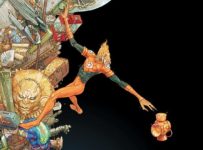In less than 8 years, a scrappy collection of TV shows has birthed heroes, introduced a Multiverse and perfectly captured the spirit of comic books. (NB: Spoilers ahead).
Since the debut of Arrow in 2012, a series based on DC Comics’ Green Arrow character, the CW has done more to create a cohesive universe on TV than the almost $1 billion budget of the combined DC Extended Universe at the cinema. CRISIS ON INFINITE EARTHS is the culmination of that effort.
Today, a “Crisis” in comic book terms indicates a monumental shift in the way we look at things, restructuring history and aligning the pieces so that they fit a new normal. You can almost set your watch by the the number of times comics published use the gimmick to sell books. Yet when the 12-part Crisis on Infinite Earths comic debuted in 1985, its primary function was an unprecedented hard reboot of the entire 50 years of the publisher’s comic book continuity.
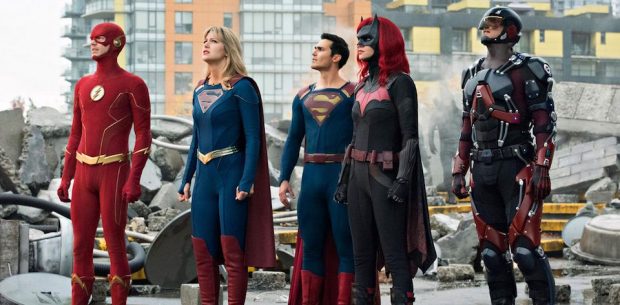
Similarly, the TV version – which played out over a 5-part crossover across Supergirl, Batwoman, The Flash, Arrow, and Legends of Tomorrow – was more than just another annual crossover. It was the culmination of the 460-plus episodes that got us there, and the half-century of TV shows that preceded and informed it.
Worlds will live…
After teasing a “Crisis” for several years across the various shows, especially in The Flash and Arrow, the basic plot sees the enigmatic Monitor (professional slamball player LaMonica Garrett) gathering Green Arrow, the Flash, Supergirl, Batwoman, Sara Lance, Ray Palmer, and several “Paragons” from the multiverse to stop the Anti-Monitor from unmaking all of reality.
What CRISIS ON INFINITE EARTHS lacks in budget it makes up for in sheer fan service and ambition. When you consider that Arrow began doing Batman storylines and a strict ‘no capes’ policy, the fact that we have cameos and interactions with Batman ’66, Smallville, The Flash (1990), Lucifer, Titans, Birds of Prey (2002), Black Lightning, Batman: The Animated Series’ Kevin Conroy, Brandon Routh’s Superman and (most surprisingly) Ezra Miller’s cinematic Flash is an amazing tribute to the size of this universe. Indeed, the latter was the first overt connection between the films and TV shows being in the same multiverse.
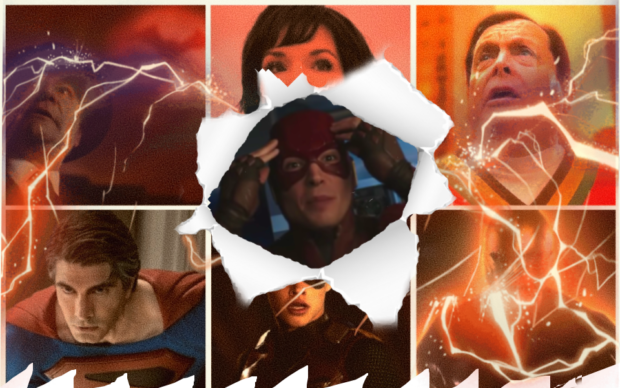
Like last year’s Avengers: Endgame, it’s a payoff for sitting through (let’s face it) some occasionally forgettable television. The adherence to US TV’s 20-plus episode model means that large slabs of most seasons are filled with throwaway storylines and the endless angst of the CW model. Which is to say they are exactly like serialised comics of a certain era, albeit with a far bigger focus on romance than heroics. If anything, CRISIS ON INFINITE EARTHS demonstrates what happens when those characters are focused on a singular high-stakes narrative.
…worlds will die…
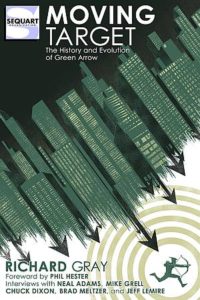
After carefully introducing the notion of a multiverse in The Flash several seasons ago, the 5-parter begins with the deaths of several major worlds. The first to fall was Earth-2, but others followed in quick succession.
Perhaps the biggest twist came early in the series with the death of Oliver Queen, the first of the universe’s heroes, and his later resurrection as the Spectre. It’s a storyline that combines aspects of Green Arrow’s history with Green Lantern comic book arcs like Emerald Twilight and Day of Vengeance, but ultimately ends with a godlike Ollie in a showdown with the Anti-Monitor where he dies. Again.
For someone who has spent what feels like half a lifetime researching and writing about Green Arrow, this was a majorly emotional arc for me. It’s not just the end of a character but the end of an era. Most fans get a movie or two if they are lucky, but to have eight seasons of your favourite character play out on screen – and get to see him ascend to a deity in the multiverse – is a rare treat. While I wasn’t always happy with the direction the show took, especially the mismanagement of the Black Canary over the years, I can’t imagine a more perfect exit for my favourite character.
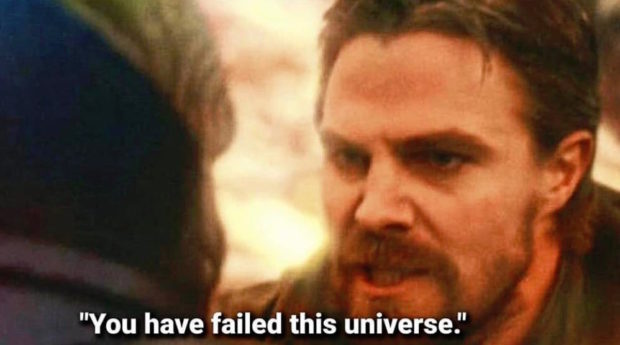
…and nothing will ever be the same
There’s a lot of questions left at the end of the series. In some ways, the Legends of Tomorrow finale was something of a misguided anti-climax, pitting the survivors against a giant Beebo and having a small-scale face-off with the Anti-Monitor. Again.
Yet the net result was a massive one: the complete restructuring of the DC television multiverse. The big CW shows – Supergirl, Batwoman, The Flash, Legends of Tomorrow, Black Lightning and the soon-to-depart Arrow are now on the same Earth (called ‘Earth-Prime’), as will be the upcoming Superman & Lois, a show that takes a leaf out of DC Rebirth comics and focuses on Kal-El and Lois raising their children. The new Hall of Justice style clubhouse (pictured below) will certainly make future crossovers easier!
What about the series threads left hanging? With an apparently good Lex Luthor (Jon Cryer), where does that leave the Supergirl arc that was hanging pre-Crisis? The Evil Lena storyline was a stretch, but using Crisis to absolve its sins feels a bit cheap. Plus, where will the anti-meta sentiment (in Black Lightning and to a lesser extent Supergirl) stand following the apparent widespread acceptance of the Age of Heroes on the new Earth-Prime? From the trailers of the forthcoming series, this will be one of the big arcs going forward.
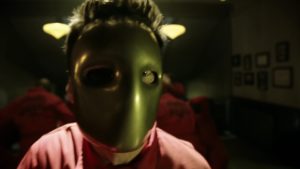
One of the other threads that the series never followed through with was Psycho Pirate, last seen in prison at the end of the previous crossover, Elseworlds. Despite his integral role in the original comic, the character was completely absent from the series. “When we’re finding ourselves forcing moments just to be faithful to the comic,” explain producer Marc Guggenheim to Entertainment Weekly, “that stuff is usually the first kind of moments to go, actually, much to chagrin of my Twitter feed.”
Nevertheless, the final reel left us with more hints of coming attractions and a much tighter multiverse. References to the now defunct Swamp Thing, the Richard Donner/Routh Superman, Doom Patrol, Stargirl, Green Lantern (coming to HBO Max) and more peppered the finale. There was no overt mention of the rumoured Green Arrow and the Canaries series, which gets a backdoor pilot in the final episodes of Arrow, but there was a nod to Gleek: the space monkey from Superfriends!
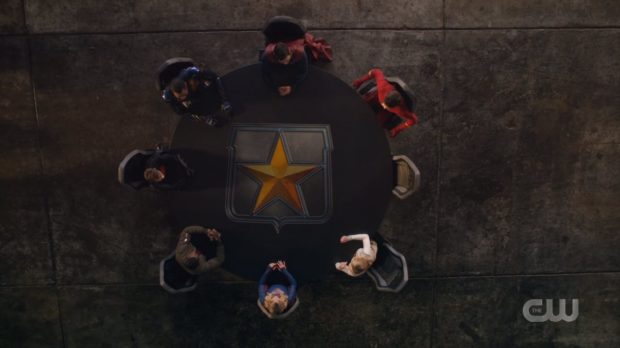
So, while the giddy thrill of seeing the Justice League in the making, as six heroes sit around a table – in a proto-Hall of Justice, complete with an empty chair for Ollie (*sniff*) – the things I look forward to the most are going to be those small moments. After all, the finale took the time to show Kara, Kate and Alex hanging out and watching TV. In fact, there’s a spin-off show right there: Super Gogglebox. I’ll just wait for the phone call, Mr. Berlanti.


